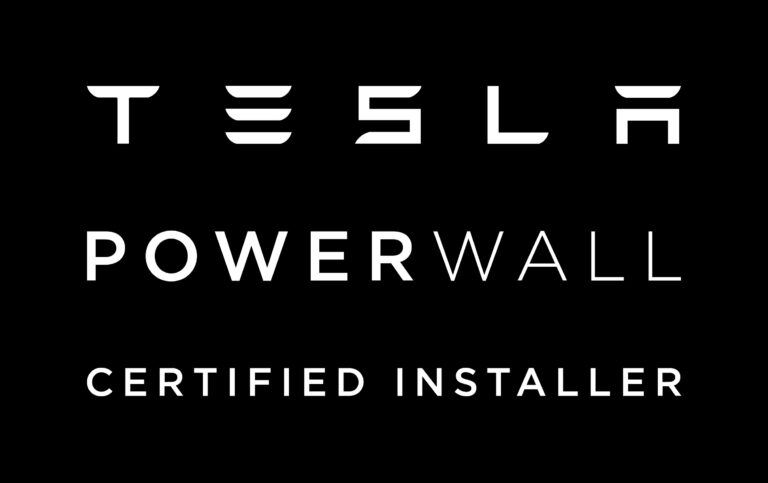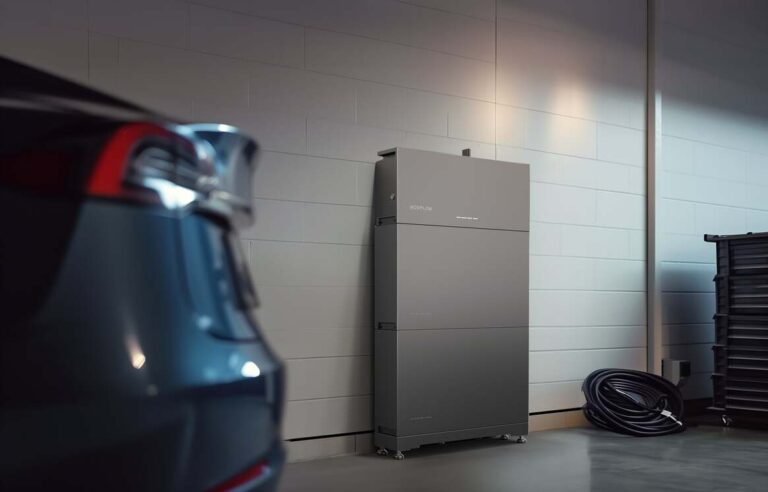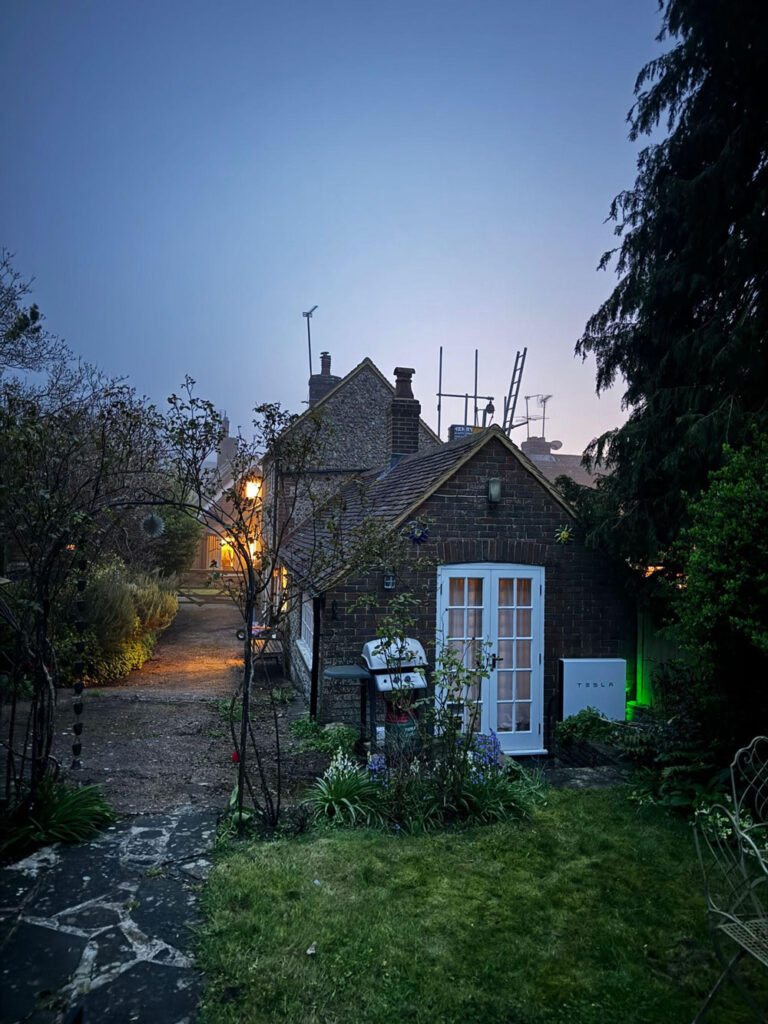Call 01273 286 627 for more information
To increase our installation capacity and improve the customer experience, we are building a network of local renewable energy installation experts. If you are interested in getting involved, please get in touch.
We are Tesla Energy certified installers. Training and guidance will be provided by our in our expert Kyle Merryweather – perfect name for solar!
These are the best we can install, we know you’ll love them as much as our customers. Very attractive and quality that won’t let you down.


We also install EcoFlow inverters and batteries. These offer a 15 year warranty and look great. From an installation point of view, they are amongst the best, plug and play inverter/battery connections plus a promised 10 minute commissioning time.

Whether it’s regarding rates of pay to requesting a meeting, we’d love to hear from you.
3 years of solar & battery installation experience
18th Edition C&G 2382-22
Level 3 Installation and Maintenance of Small Scale Solar Photovoltaic Systems (BPEC or similar)
Van, tools, experience working with customers and a can do attitude!
*Additional training & guidance provided
*Use the Leoht installation app

Each install is assigned up to 2-3 days to complete. Rather than quantity, we aim for quality. Without pressure to get multiple installs complete in a day – we feel installers are enabled to do their best work, whilst getting paid the highest rates in the industry…
*Sales/Marketing//MCS/DNO/Paperwork all taken care of by Leoht.
Complete an enquiry form requesting a solar design or a free quote regarding the solar panel installation.
You’ll find out…
How much energy your home could generate. How much it would cost. How much you could save.
If you like your design it’s time to book a drone survey. A drone survey will look at your roof in more detail, ensuring that we offer the best possible bespoke system for your home or business
After a site survey, you are ready to book your installation.
Installation usually takes two days.
Lead times are 3-4 weeks. Stock dependant.


We are based in Winchester, Hampshire and we install solar panels anywhere up to 2 hours drive away from our headquarters.
We install solar panels in:
Bath
Bournemouth
Brighton
Bristol
Cambridge
Canterbury
Chichester
Exeter
London
Lymington
Northampton
Oxford
Portsmouth
Poole
Reading
Romsey
Salisbury
Southampton
Swindon
Taunton
Weymouth

Number of trees planted
Miles of driving
Long haul flights per year
A solar inverter’s maximum output DOES NOT relate to the solar capacity able to be installed. Getting AC output confused with the DC capacity of the solar array could cost you £000’s in the long run by not using the...
An electric car will on average travel 3-4 miles per kWh, depending on driving habits and driving conditions. I have had my Tesla model 3 for 3 years and over this time I have averaged just over 4 miles per...
The solar panel inverter is the most important part of your solar system – choose a good one. Solar panel inverters convert DC electricity generated by your solar panels into AC to be used in the home. They monitor your...
Are flat roofs suitable for solar panels? When would you consider a flat roof solar panel system? Flat roof solar panels are used to maximise solar generation from a dormer, flat roof extension or garage roof. Flat roof solar panels...
How to compare solar panels We’re all taught to believe that, for the most part, bigger is better – and you’d be forgiven for thinking the same when it comes to solar capacity. A larger capacity should mean more power,...
How many solar panels do I need? Most domestic installations fall between 6 – 24 solar panels. You will need 10 solar panels to generate the equivalent amount of electricity that an average home uses per year. You are not...
A solar inverter’s maximum output DOES NOT relate to the solar capacity able to be installed. Getting AC output confused with the DC capacity of the solar array could cost you £000’s in the long run by not using the...
An electric car will on average travel 3-4 miles per kWh, depending on driving habits and driving conditions. I have had my Tesla model 3 for 3 years and over this time I have averaged just over 4 miles per...
The solar panel inverter is the most important part of your solar system – choose a good one. Solar panel inverters convert DC electricity generated by your solar panels into AC to be used in the home. They monitor your...
Are flat roofs suitable for solar panels? When would you consider a flat roof solar panel system? Flat roof solar panels are used to maximise solar generation from a dormer, flat roof extension or garage roof. Flat roof solar panels...
How to compare solar panels We’re all taught to believe that, for the most part, bigger is better – and you’d be forgiven for thinking the same when it comes to solar capacity. A larger capacity should mean more power,...
The Feed in Tariff ended in 2019 and was replaced by the Smart Export Guarantee. Octopus Outgoing currently pays 15p/kWh and as high as 30p/kWh on Octopus Flux for exported electricity. E On pays 16.5p/kWh. Now export rates have improved...
In 1921, Albert Einstein won his first and only Nobel prize for his work on describing the photoelectric effect. Light (a beam of particles) knocks loose electrons from the solar cell, the solar cell then directs these electrons along a...
Solar panels in England will generate between 15-27% as much electricity in the winter compared to their summer peak, depending on the direction they face, pitch and shading. North facing solar panels will produce just 6% compared to the energy...
Installing solar panels and battery storage will make an immediate impact on your energy bills, no matter what tariff you choose. Did you know that the difference between electricity tariffs could be hundreds of pounds a year. It’s worth taking...
One for the zoom family quiz!
In 1921, Albert Einstein won his first and only Nobel prize for his work on describing the photoelectric effect.
In a nutshell, light (a beam of particles) knocks off electrons from the solar cell; the solar cells direct these electrons along a current – creating electricity. In theory, solar panels could last forever as there are no moving parts.
Solar power panel efficiency has increased significantly over the last ten years so you might be surprised at how much electricity even a small roof could generate.
The smallest system we would recommend would be 9 x 380W panels, covering an area of 17 square meters. (4m x 4.25m).
No. It’s a common myth. Whilst south facing is the most optimum facing position, as a rule of thumb – an identical East or West facing roof would generate 85% as much energy as the south-facing roof.
You may prefer to have an east and west facing roof than the south and north-facing roof as you could fit twice as many electric residential solar panels on the east/west roof than just south facing.
Even a North facing roof will generate approx 55% as much energy as a south-facing roof. For example, a 20 year old 10% efficient south-facing solar panel would generate approximately the same amount of energy as a modern north-facing solar panel.
The installation of solar panels on residential buildings are considered permitted development so you do not require planning permission if they comply with the following conditions.
There are necessary limits and conditions which must be complied with to benefit from permitted development rights.
Feel free to reach out to us to buy solar panels in the UK & switch to a sustainable lifestyle. Give us a call at 01273 286 627 and request for a free design and quote.
The district network operator (DNO) is the company responsible for distributing electricity from the national grid to your home. Installers must inform the DNO of your installation within 28 days after the date of installation. Leoht will handle this for you.
You do not require permission for systems under 16 amps per phase (3.68kW single-phase or 11.04kW three-phase supply). All of the residential solar panel systems that we install fall into this category. System sizes are based on the AC inverter rating rather than the peak DC output of the solar system.
“By following bad advice regarding output limits you could be costing yourself £000’s.”
Not on their own. But it is possible when combined with a time of use tariff and energy storage – depending on the time of use tariff and smart export guarantee rates.
For example, Octopus Go tariff pays 5.5p/kWh for every unit exported and charges 5p/kWh for off-peak use from 00:30 – 04:30. You could install solar panels that generate the equivalent of 100%+ of your electricity consumption and earn 5.5p/kWh for every unit exported to pay for topping up the batteries in the winter at 5p/kWh.
Your bills could even go negative if you can generate more than you use!
Time of use tariffs are why we have smart meters so expect them to become more common in future.
Yes. Solar panels are worth the cost. We believe that solar pv panels systems are an excellent investment for both you and the environment.
Our solar power panels systems cost between £5000 to £9000+ VAT, depending on the size and location of your home. This may seem expensive, but by installing a solar system we aim to reduce your electricity bill by up to 100%. Where else could you earn 9-13% per year tax-free on a low-risk investment, whilst protecting against rising energy prices and helping the environment at the same time.
Our solar panels are durable and come with a 25-30 year warranty. If well maintained, our solar panels can last for more than 30 years. Our solar panels are modern and blend well with any roof. A premium solar panel installation acting as your home’s own energy supply is likely to increase the value of your property.
Solar panels are largely maintenance-free. Over time, however, they may be affected by environmental factors – dead leaves, for example, may block sections of the panel. We recommend that solar panels are checked every few years to ensure maximum efficiency and cleaned once or twice a year.
Solar panels need sunlight to generate energy, so they do not work at night. However, you can install a battery to store excess electricity generation during the day to then be used later at night.

© Leoht 2024 | All Rights Reserved | Privacy Policy
Website by Think Creative